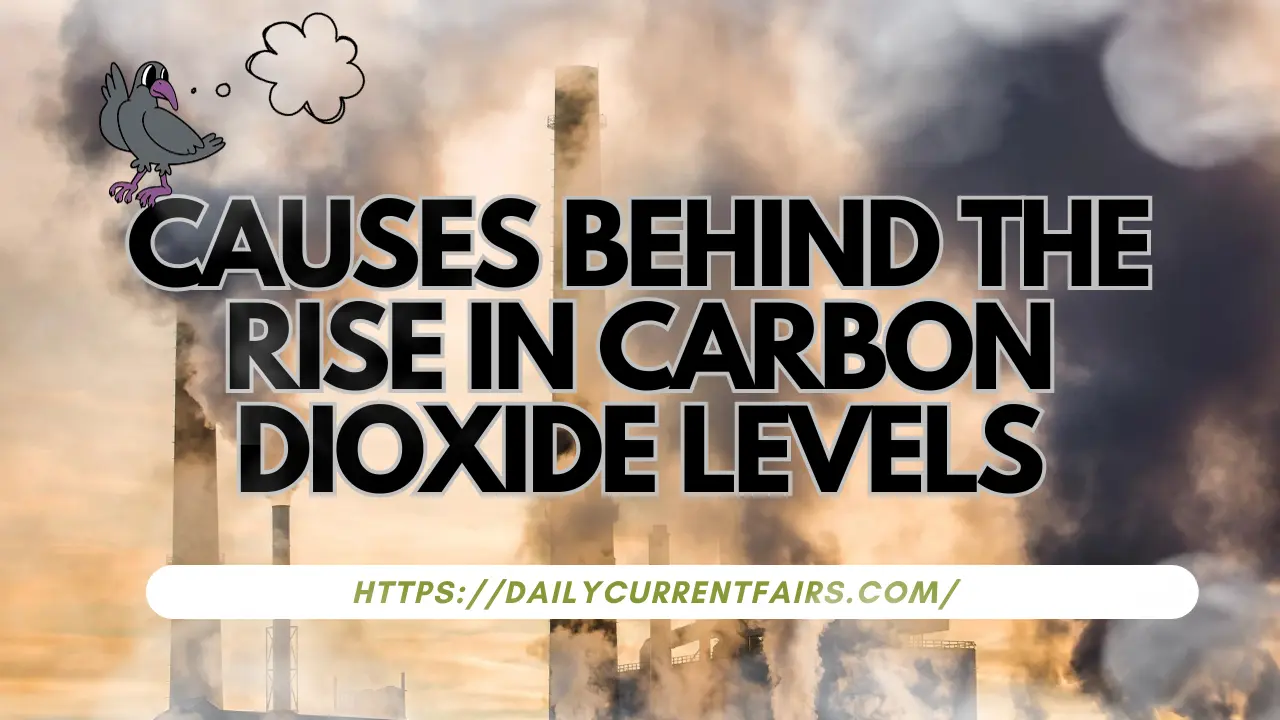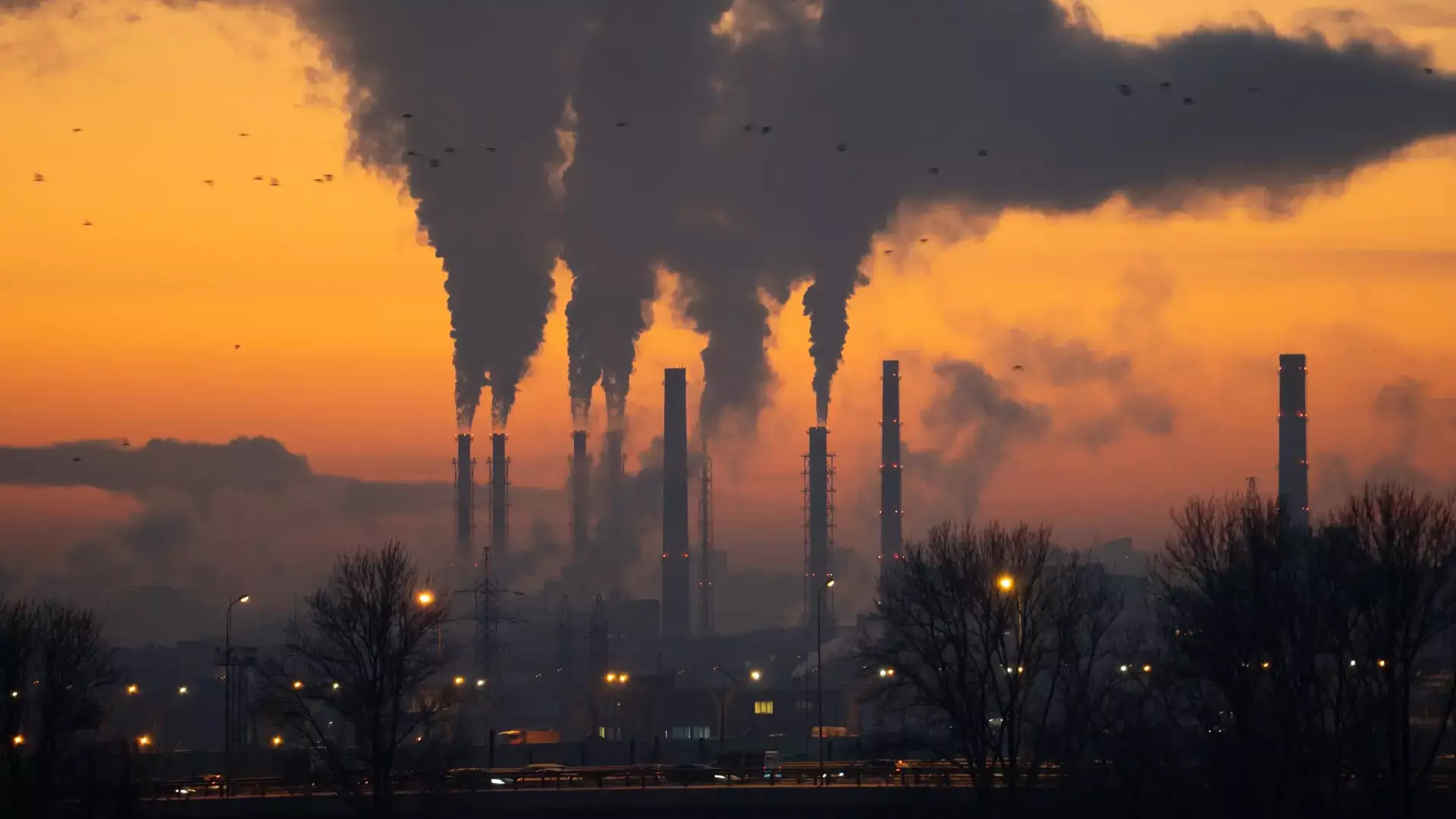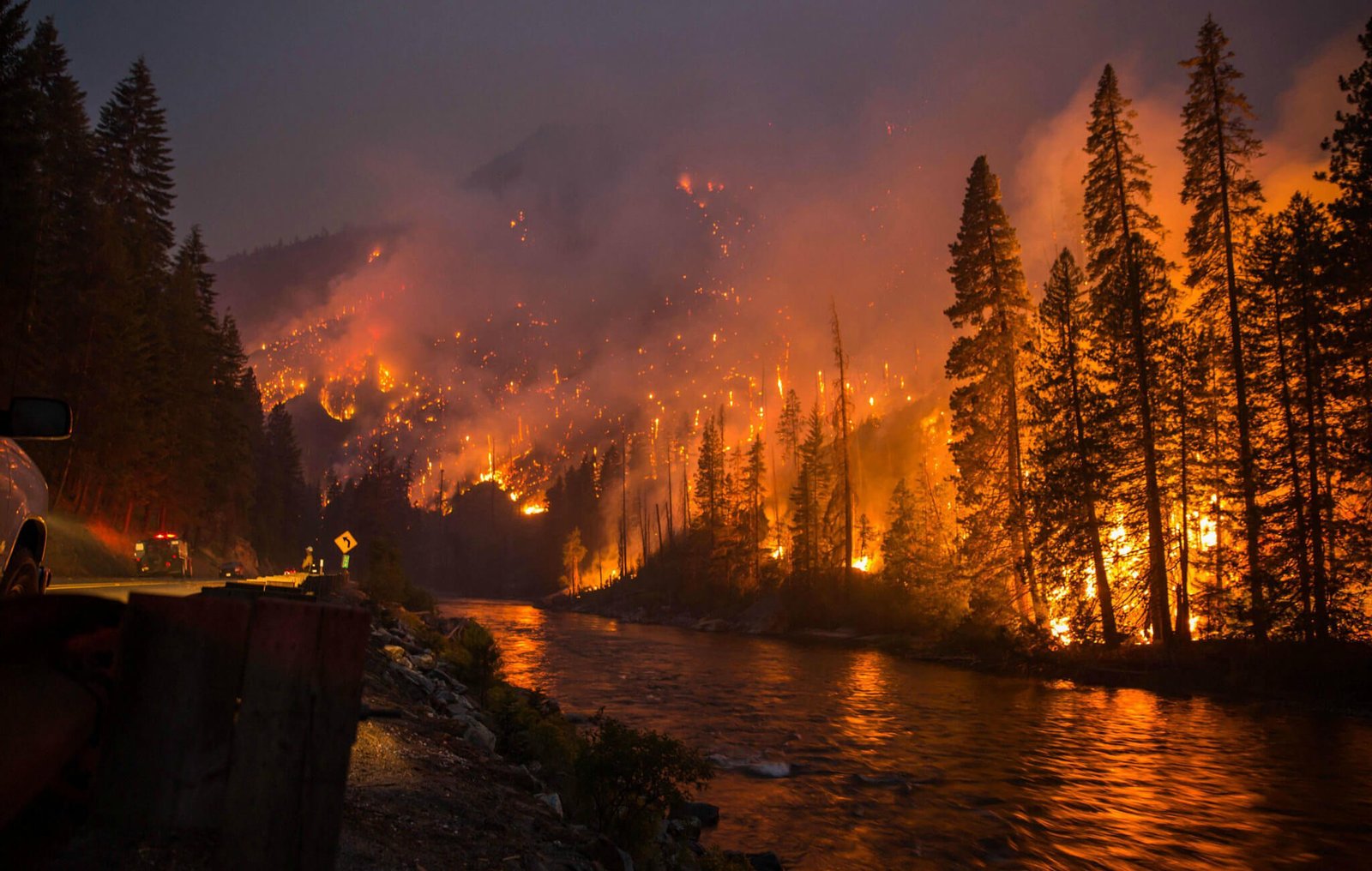
Introduction
In recent decades, the rise in carbon dioxide (CO2) levels has become a growing concern for scientists, environmentalists, and policymakers alike. Carbon dioxide, a greenhouse gas, plays a crucial role in the Earth’s climate system. However, human activities have significantly altered the natural balance, leading to an unprecedented increase in CO2 concentrations. In this article, we will explore the primary reasons behind the surge in carbon dioxide levels and their implications for the planet.
- Fossil Fuel Combustion:
The burning of fossil fuels, such as coal, oil, and natural gas, is the leading contributor to the elevated levels of carbon dioxide in the atmosphere. The combustion of these fuels for energy production in power plants, industrial facilities, and transportation releases large quantities of CO2. As global energy demand continues to rise, the dependence on fossil fuels remains a major driver of carbon emissions.
- Deforestation:
Forests act as carbon sinks, absorbing and storing significant amounts of carbon dioxide through photosynthesis. However, widespread deforestation for agriculture, logging, and urbanization has led to the removal of these vital carbon-absorbing ecosystems. The loss of forests not only reduces the planet’s capacity to sequester carbon but also releases stored carbon back into the atmosphere, contributing to increased CO2 concentrations.
- Land Use Changes:
Apart from deforestation, other land use changes, such as converting natural landscapes into urban areas or altering agricultural practices, can impact carbon dioxide levels. Changes in land use often disturb soil carbon stocks and influence the balance of natural carbon cycles, leading to additional carbon emissions.
- Industrial Processes:
Certain industrial processes release carbon dioxide directly into the atmosphere. Cement production, for example, involves the chemical transformation of limestone into clinker, releasing CO2 as a byproduct. Other industrial activities, including chemical manufacturing and metal production, contribute to carbon emissions through various processes.
- Waste Management:
Improper waste management practices, particularly the decomposition of organic waste in landfills, contribute to the release of methane (CH4), a potent greenhouse gas that eventually oxidizes into carbon dioxide. Additionally, the incineration of waste materials releases carbon dioxide directly into the atmosphere.
- Agricultural Practices:
Certain agricultural practices, such as rice cultivation and the use of synthetic fertilizers, can result in the release of methane and nitrous oxide, both of which are potent greenhouse gases. These emissions indirectly contribute to the overall increase in carbon dioxide levels.
UNDERSTANDING POLLUTION: TYPES, IMPACTS, AND SOLUTIONS FOR A SUSTAINABLE FUTURE
Methods for reducing Carbon dioxide
Reducing carbon dioxide (CO2) levels in the atmosphere is a critical step in mitigating climate change and preserving the health of our planet. Individuals, communities, businesses, and governments all play a role in addressing this global challenge. Here are several strategies to help reduce CO2 emissions:
- Transition to Renewable Energy:
- Shift away from fossil fuels by investing in renewable energy sources such as solar, wind, hydropower, and geothermal.
- Support policies and incentives that promote the development and use of renewable energy technologies.
- Energy Efficiency:
- Improve energy efficiency in homes, businesses, and industries to reduce overall energy consumption.
- Upgrade to energy-efficient appliances, lighting, and HVAC systems.
- Encourage and adopt sustainable building practices and designs.
- Sustainable Transportation:
- Promote the use of electric vehicles (EVs) and invest in the development of EV infrastructure.
- Encourage public transportation, cycling, and walking to reduce reliance on fossil fuel-powered vehicles.
- Support policies that incentivize the production and purchase of fuel-efficient vehicles.
- Afforestation and Reforestation:
- Plant more trees to absorb CO2 from the atmosphere.
- Support conservation efforts and sustainable forestry practices to maintain existing forests.
- Promote reforestation projects on degraded lands.
- Carbon Capture and Storage (CCS):
- Invest in research and development of carbon capture technologies that can capture CO2 emissions from industrial processes and power plants.
- Explore and implement carbon capture and storage projects to prevent CO2 from entering the atmosphere.
- Waste Management:
- Reduce, reuse, and recycle to minimize waste production.
- Implement composting programs to reduce organic waste in landfills.
- Invest in waste-to-energy technologies to capture energy from waste materials.
- Sustainable Agriculture:
- Promote sustainable farming practices that reduce the use of synthetic fertilizers and pesticides.
- Encourage precision agriculture and agroforestry to sequester carbon in soils.
- International Cooperation:
- Collaborate with other nations to share knowledge, technologies, and resources in the fight against climate change.
- Support and adhere to international agreements and treaties aimed at reducing global carbon emissions.
- Education and Advocacy:
- Raise awareness about the impact of carbon emissions on the environment and climate change.
- Advocate for sustainable practices and policies at local, national, and international levels.
- Policy and Regulation:
- Implement and enforce regulations that limit carbon emissions from industrial processes, power generation, and other sources.
- Incentivize businesses and individuals to adopt sustainable practices through policy measures.
Unmasking the Deceptive Nature of Trojan Horse: How They Infiltrate and Operate
Addressing the challenge of reducing carbon dioxide levels requires a comprehensive and integrated approach, involving both individual actions and systemic changes at various levels of society. By adopting sustainable practices and supporting initiatives that reduce carbon emissions, we can contribute to a healthier and more sustainable future.
Conclusion:
The rising levels of carbon dioxide in the atmosphere are primarily driven by human activities, particularly the burning of fossil fuels, deforestation, industrial processes, and changes in land use. Understanding these sources is crucial for developing effective strategies to mitigate climate change and reduce carbon emissions. Addressing the challenge of rising carbon dioxide levels requires a concerted effort on a global scale, with a focus on transitioning to sustainable energy sources, promoting reforestation and sustainable land use practices, and adopting environmentally friendly technologies across various sectors. Only through collaborative and proactive measures can humanity hope to curtail the alarming trajectory of carbon dioxide concentrations and safeguard the health of the planet for future generations.






It¦s truly a nice and useful piece of information. I am happy that you shared this helpful info with us. Please keep us informed like this. Thanks for sharing.